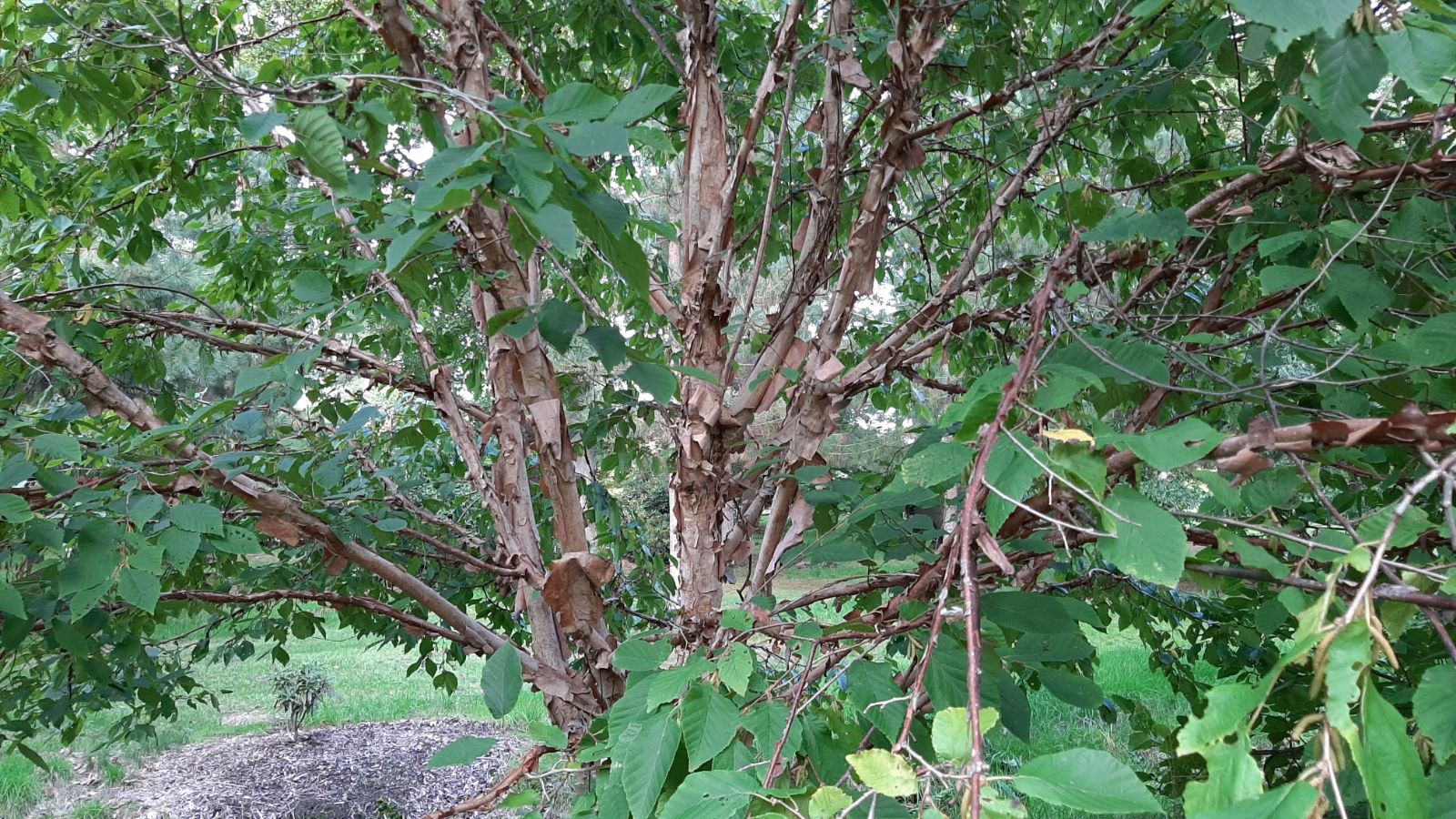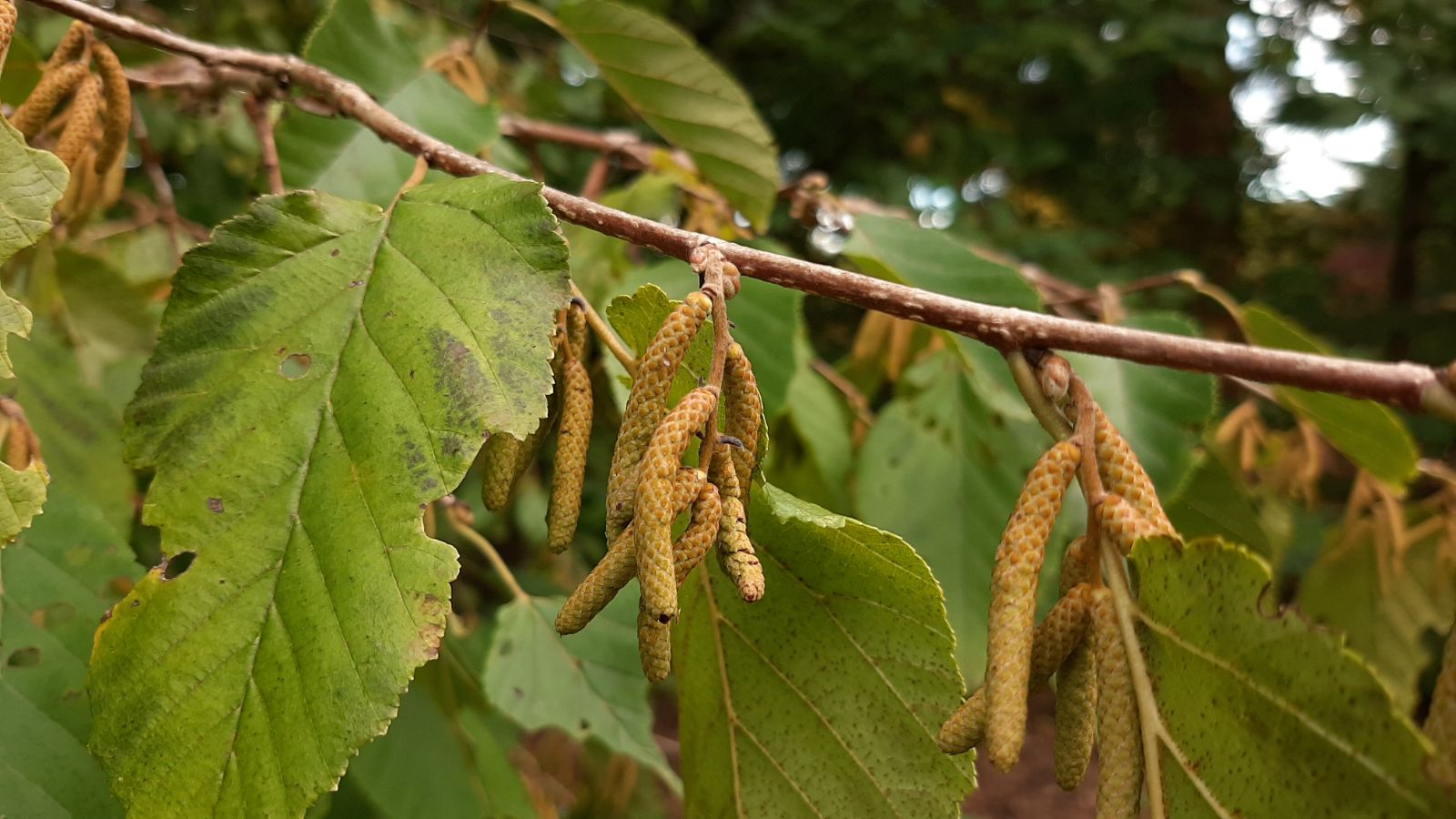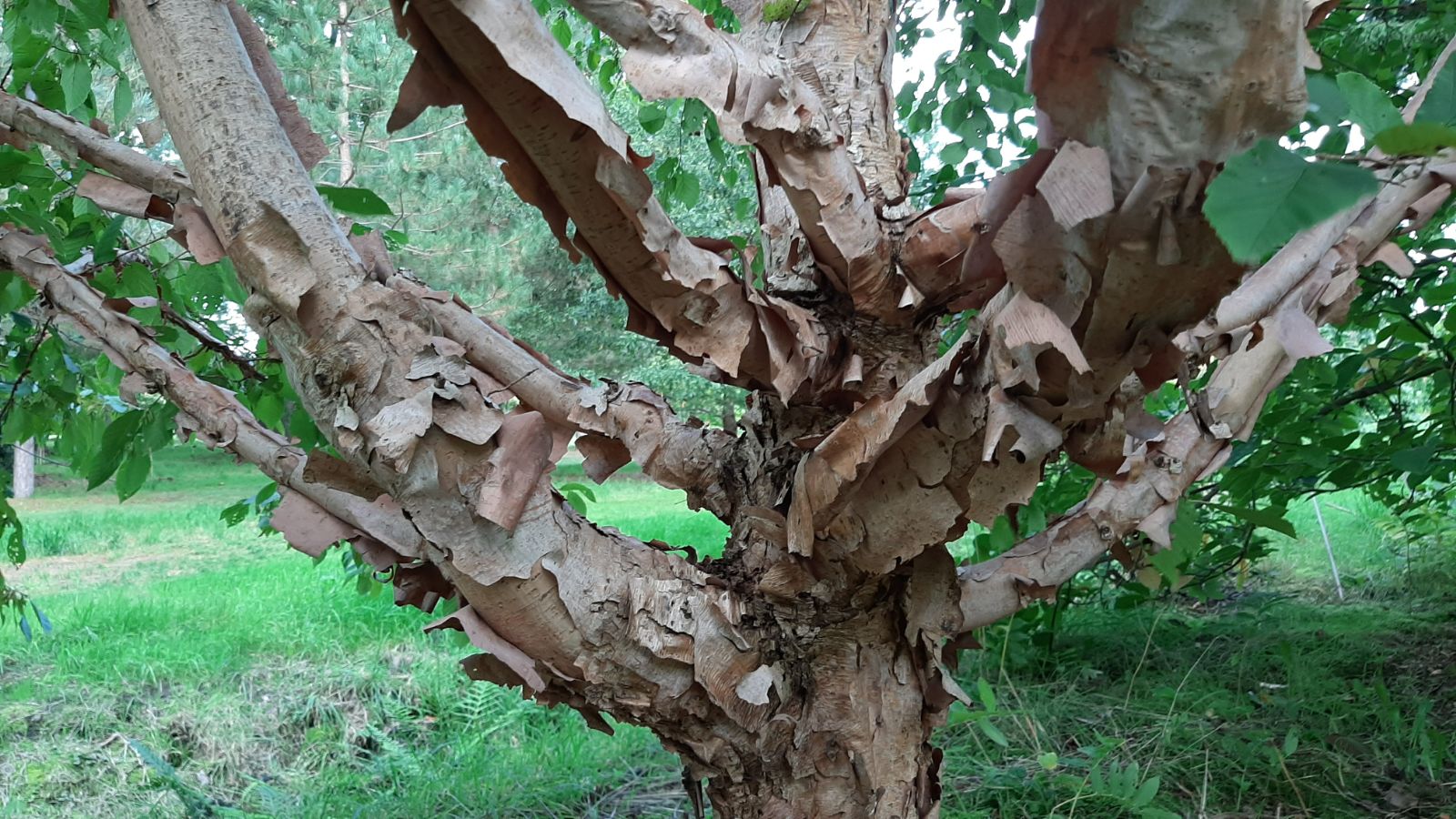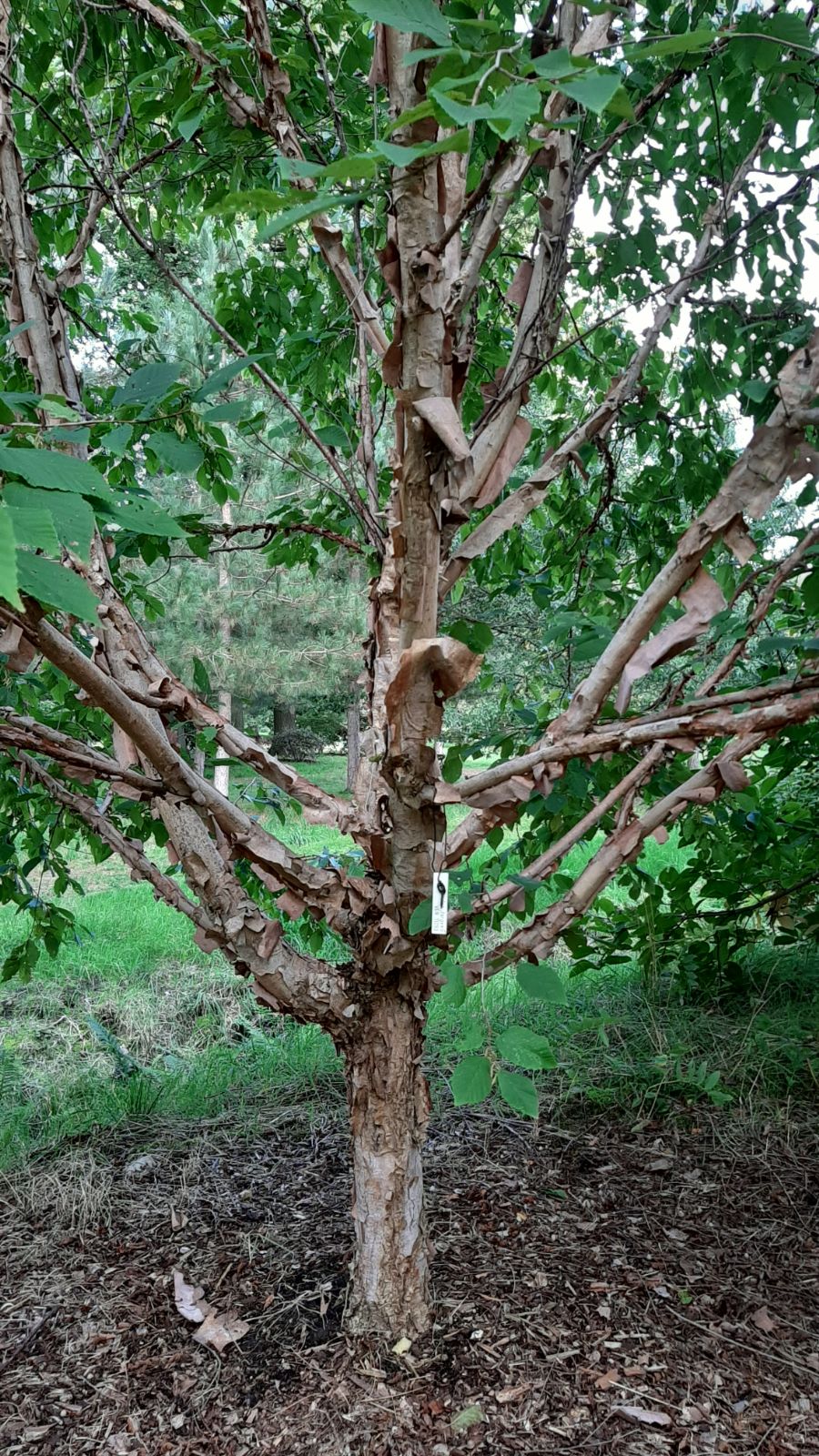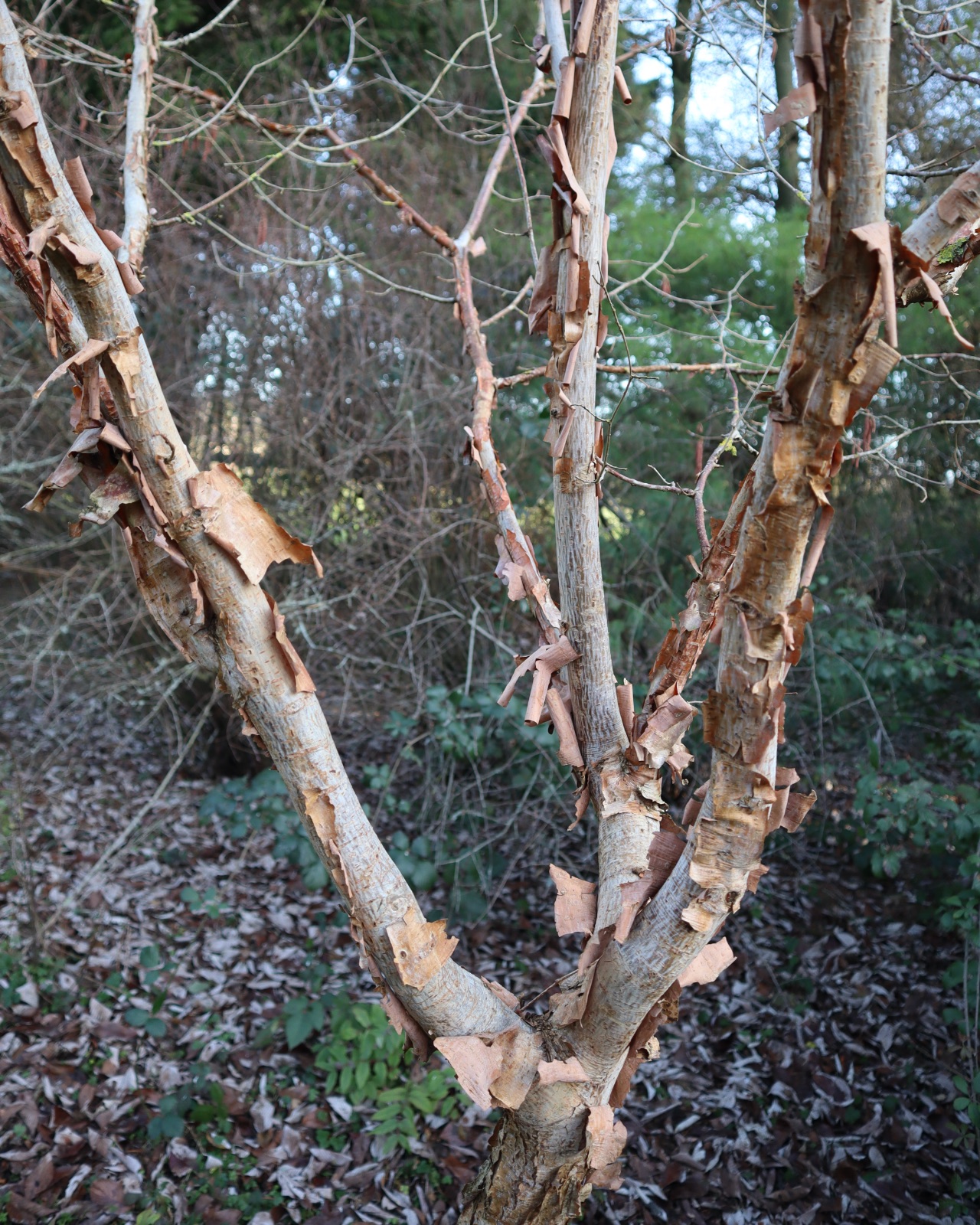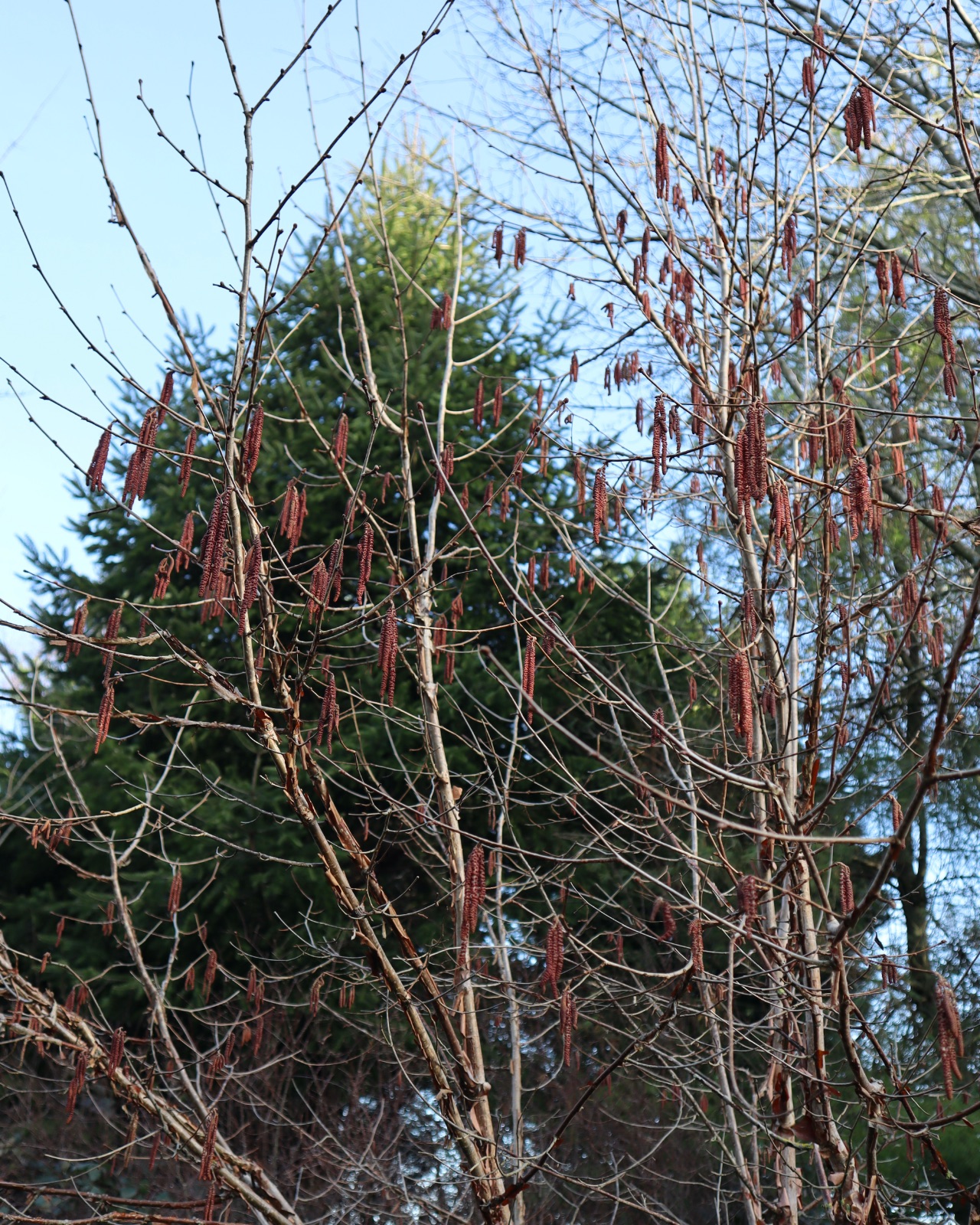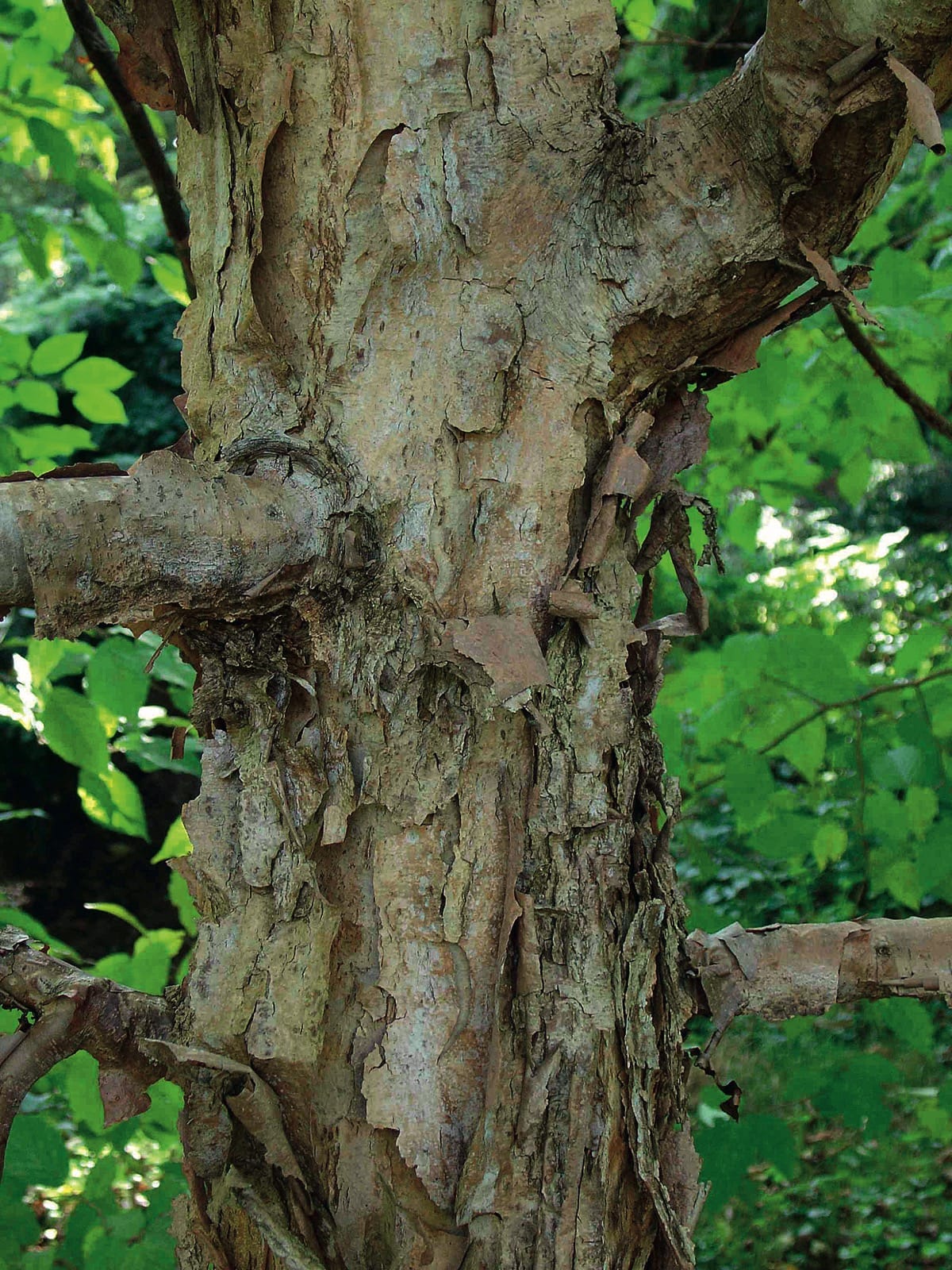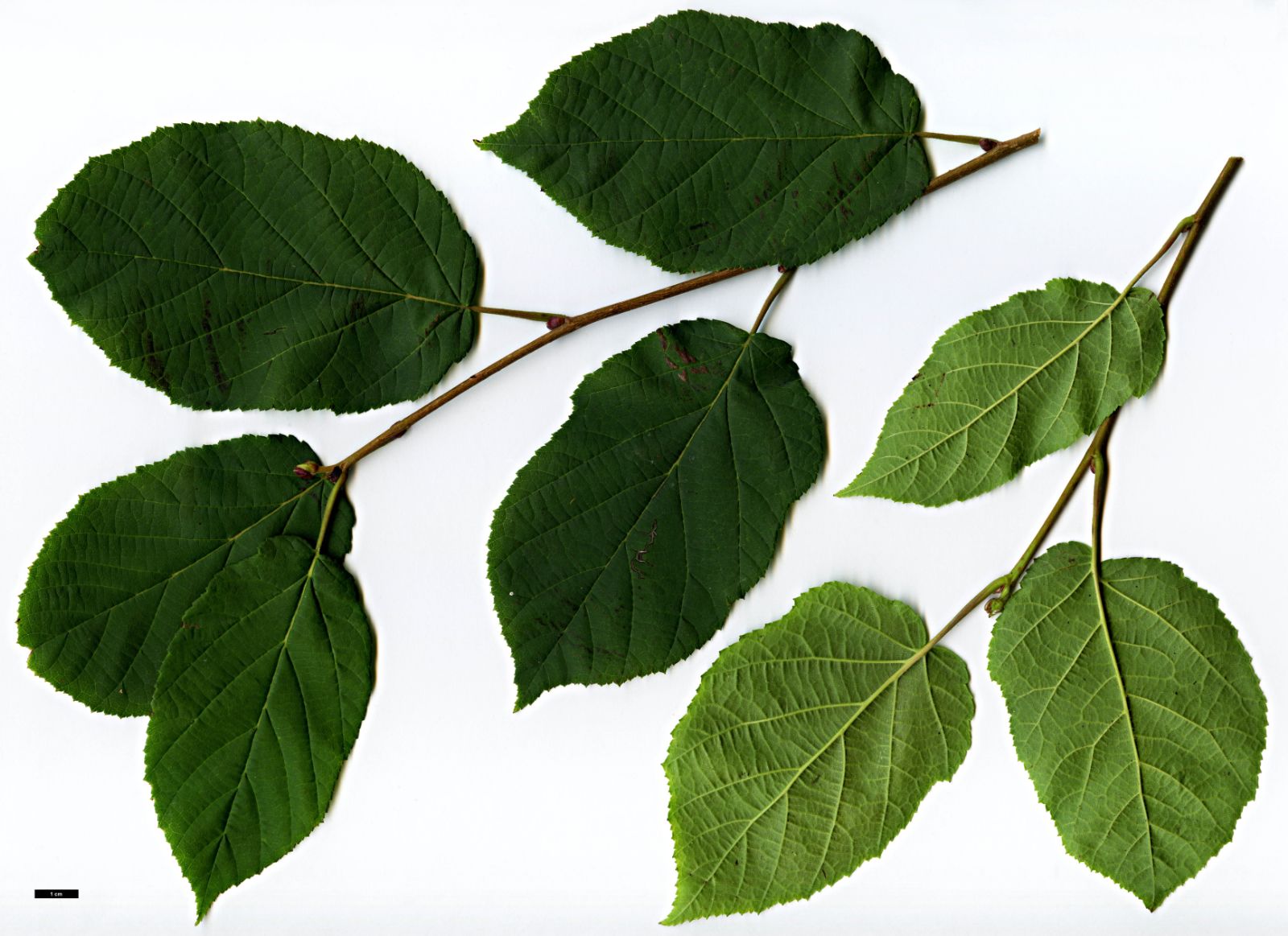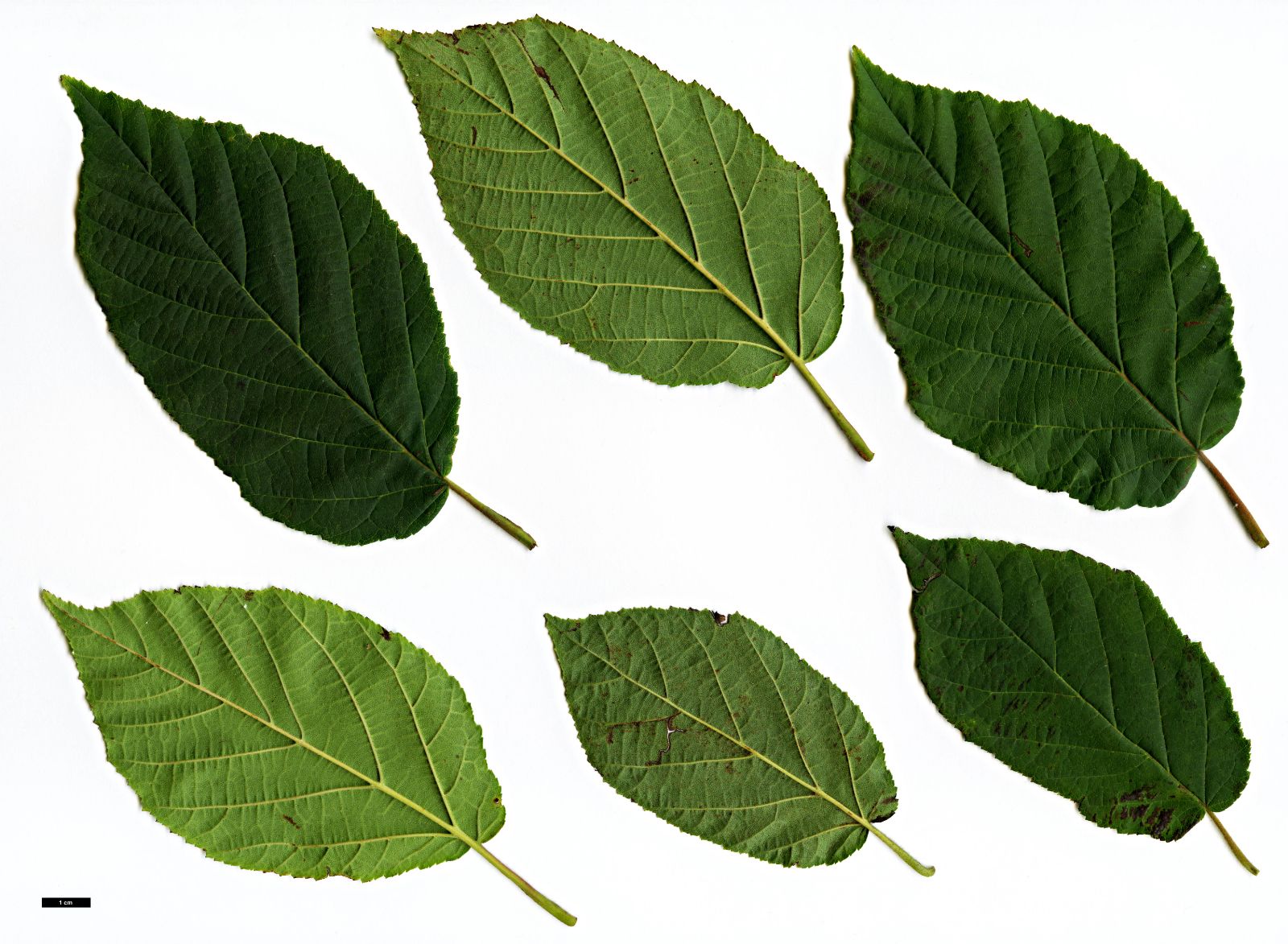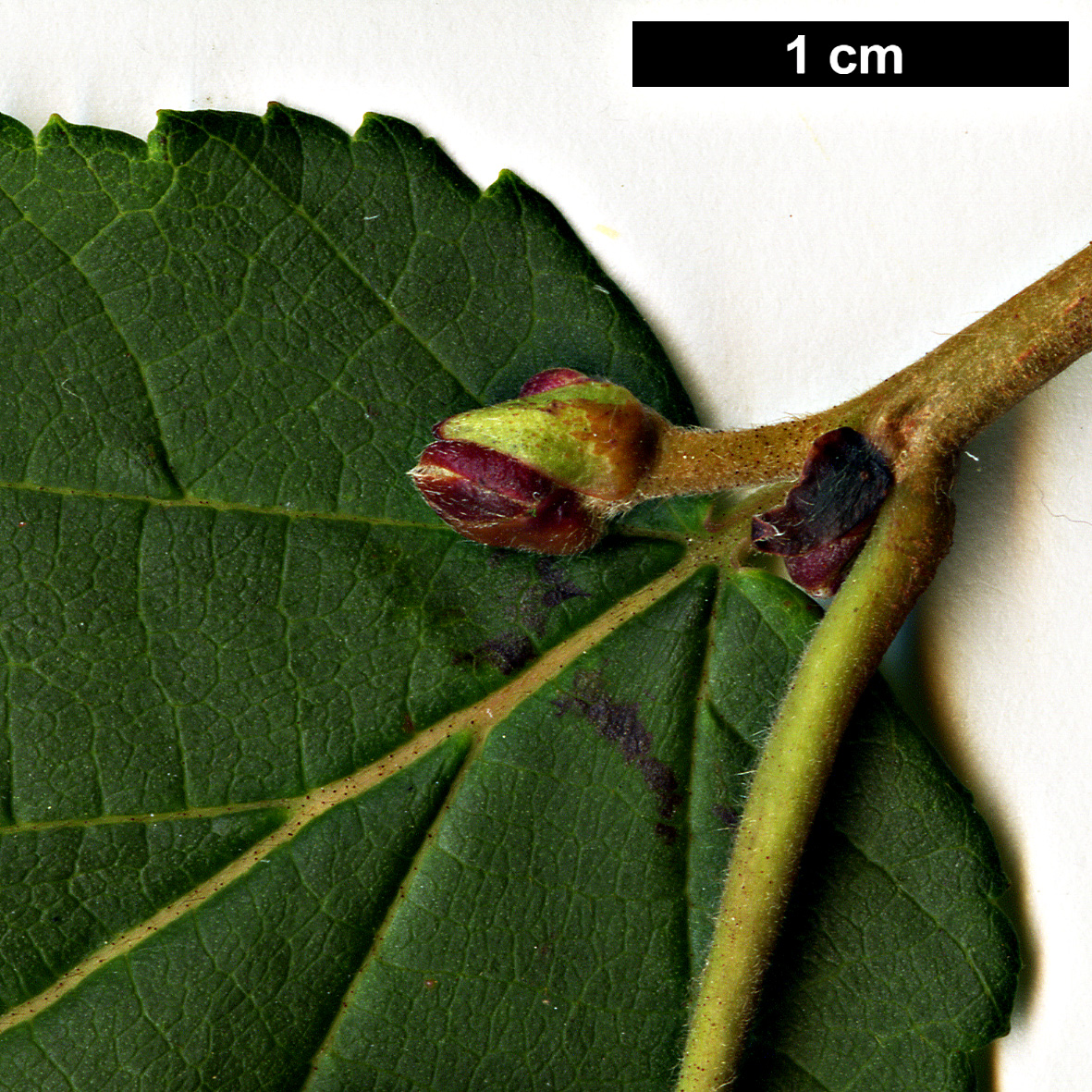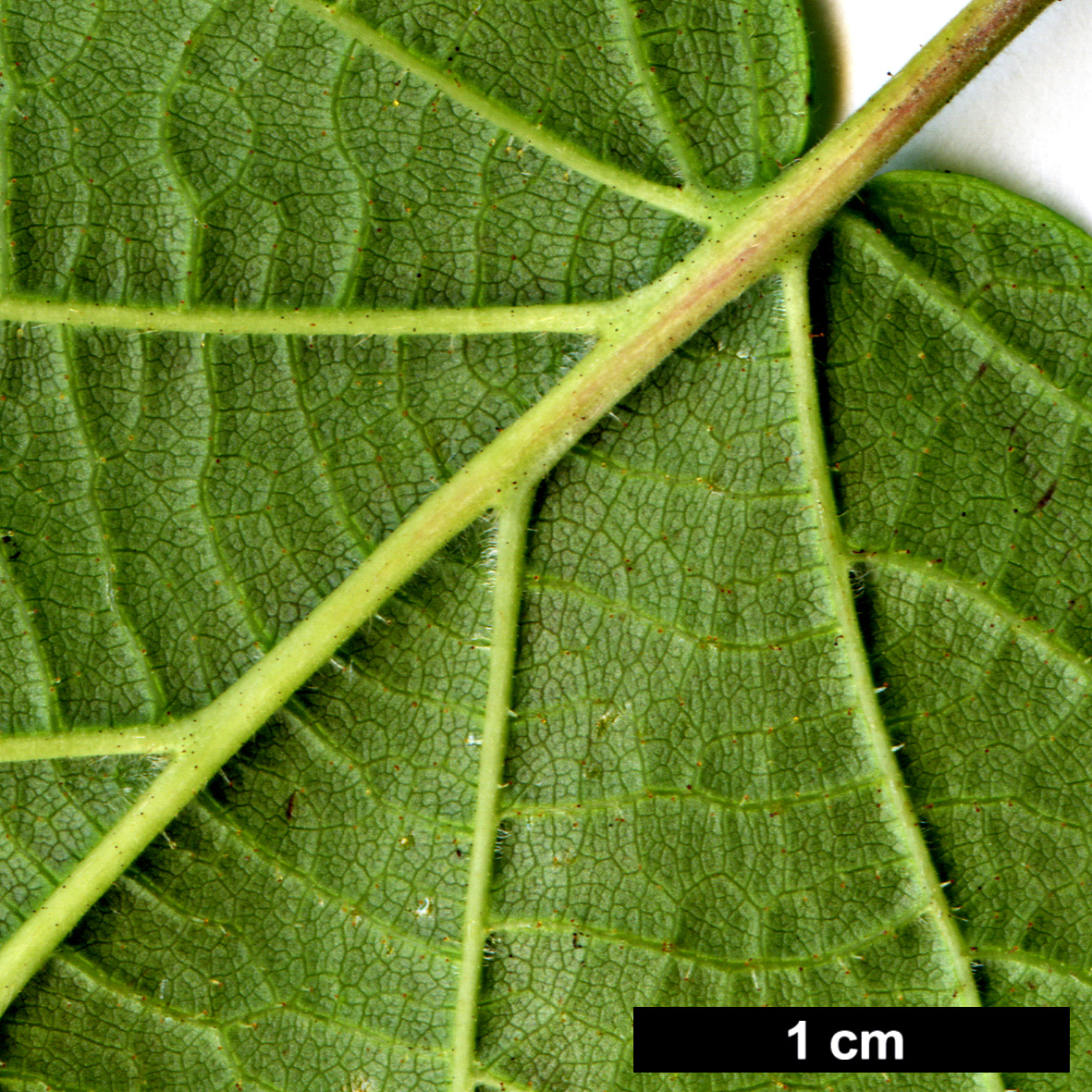Corylus fargesii
Sponsor
Kindly sponsored by
Kent Men of The Trees
Credits
Owen Johnson & Richard Moore (2023)
Recommended citation
Johnson, O. & Moore, R. (2023), 'Corylus fargesii' from the website Trees and Shrubs Online (treesandshrubsonline.
Genus
Common Names
- Farges' Hazel
- Birch-bark Hazel
- 披针叶榛 (pi zhen ye zhen)
Synonyms
- Corylus rostrata var. fargesii Franch.
- Corylus mandshurica var. fargesii (Franch.) Burkill
Other taxa in genus
- Corylus americana
- Corylus americana × avellana
- Corylus avellana
- Corylus avellana × cornuta
- Corylus avellana × heterophylla
- Corylus avellana × maxima
- Corylus avellana × sieboldiana
- Corylus avellana × sutchuenensis
- Corylus Badgersett Hybrids
- Corylus chinensis
- Corylus colchica
- Corylus colurna
- Corylus × colurnoides
- Corylus cornuta
- Corylus ferox
- Corylus 'Grand Traverse'
- Corylus heterophylla
- Corylus jacquemontii
- Corylus maxima
- Corylus 'Purple Haze'
- Corylus 'Rosita'
- Corylus 'Ruby'
- Corylus sieboldiana
- Corylus × spinescens
- Corylus sutchuenensis
- Corylus 'Te Terra Red'
- Corylus × vilmorinii
- Corylus yunnanensis
Tree to 25 m, sometimes with more than one trunk. Bark peeling at first in yellowish and reddish papery rolls, ultimately light brown and fissured. Young twigs grey-brown, slender, with a non-glandular pubescence. Leaf small and slender (6–9 × 3–5 cm), oblong to ovate or lanceolate, obliquely cordate to rounded at the base and with an acuminate tip, coarsely and irregularly doubly serrate, both surfaces sparsely pubescent, particularly along the veins; petiole 10–15 mm long, with dense non-glandular hairs. Male catkins in clusters of 2–8. Nut small (10–15 mm wide), smoothly enclosed in a bract which is constricted to form a non-ribbed sheath 2–5 cm long, the tip divided into triangular to lanceolate lobes which are seldom forked, surfaced with dense yellow woolly hairs plus some stiff glandular hairs at first. Flowering May to July, fruiting July to August (China). (Li & Skvortsov 1999; Camelbeke & Aiello 2017).
Distribution China S Gansu, Guizhou, Henan, Hubei, Jiangxi, S Ningxia, Shaanxi, NE Sichuan (Chengkou Xian).
Habitat Forests, in mountain valleys, 800–3000 m.
USDA Hardiness Zone 5
RHS Hardiness Rating H6
Conservation status Least concern (LC)
Like Corylus colurna, this is a ‘tree-hazel’, growing tall on an often straight, single stem in sharp distinction to the habit of its allies from western Europe and North America. The sock-like bracts which conceal the nuts reveal an even closer relationship to C. chinensis; both these oriental species have an interesting bark which in C. chinensis is grey and becomes craggy, almost shaggy, with age. The birch-like bark of a young C. fargesii, peeling in papery rolls of beige and coppery-brown, is this plant’s most distinctive quality and one of the most remarkable features which the hazels have to offer the gardener. This graceful, birchlike aspect is enhanced by the slim winter shoots and the leaves which are smaller than most hazels’ and unusually slender.
Corylus fargesii was first described by Adrien Franchet in 1899, as a variety of the American C. cornuta whose bracts are similar but which is a suckering shrub and not, in fact, closely related; the name commemorates Paul Farges, the French plant-hunting missionary who was the first westerner to observe this Chinese endemic, in Sichuan Province. (Farges had reported specimens up to 15 m tall, an observation dismissed by Franchet as an anomaly, rather than a guide to the species’ real allegiance, as revealed by contemporary phylogenetic analyses (IPNI 2023; Yang et al. 2018).)
Despite its ornamental qualities, C. fargesii never reached the west during the first great age of plant-hunting in China, and a curious irony is that its eventual arrival was in the guise of a potential nut tree rather than as a garden plant. Cecil Farris, an amateur hazel breeder in Lansing, Michigan, received seeds from Tianshui, Gansu, in 1981, via an Australian colleague, which had been sent out by the Chinese Academy of Forestry (Camelbeke & Aiello 2017). Working in American Climate Zone 5b, Farris found the tree easy to grow and resistant to Eastern Filbert Blight, but of little use in hazel breeding; one of his scions is still represented in the United States’ National Clonal Germplasm Repository at Corvallis, Oregon. Farris called his stock ‘paperbark hazel’, an apt name but one which may have helped to keep this introduction beneath botanists’ and gardeners’ radar for so long: C. papyracea Hickel (‘papery hazel’) is actually a synonym for C. chinensis, the species with which C. fargesii is most likely to be confused.
Farris’ stock has proved to be genuine, but the first (unrecorded) introduction to Europe of what was supposed to be C. fargesii proved to be C. chinensis; material from one scion at the Domaine de Segrez near Paris seems to have been distributed quite widely, for example to Tregrehan in England. A plant received as C. fargesii from Beijing in 2003 by the Sir Harold Hillier Gardens also seems likely to be C. chinensis. Confusion continued when material retrospectively identified as C. fargesii was introduced to the Sonoma Botanical Garden in California from Sichuan Province in 1992 by William McNamara (McNamara 34): in 2017, Keith Rushforth was able to confirm that the two plants here were not C. fargesii after all, but probably the distantly related bush C. yunnanensis (addendum to Camelbeke & Aiello 2017). American dendrologists and gardeners who knew the Sonoma trees, but remained unaware of Farris’ work, were consequently liable to assume that here was a rather dull species, which was hardy in central California but perhaps not much further north – misconceptions which have taken a long time to evaporate.
Corylus fargesii finally began to be better known when the North America-China Plant Exploration Consortium (NACPEC) collected seed at Dang Chuan Forest Station in Gansu in 1996 (QLG-231). Nuts were quite widely distributed among botanic gardens in the eastern United States, where the young trees have thrived, reaching 15 m at the Arnold Arboretum by 2016 and coping well with the hot, humid summers of Atlanta Botanical Garden in Georgia (Grimshaw & Bayton 2009; Camelbeke & Aiello 2017). In Europe, a tree at Westonbirt Arboretum accessioned in 2007 was already 12 m tall in 2014 (Tree Register 2023), but we have not checked its authenticity.
Two further introductions were made by NACPEC in 2005 (from southern Gansu) and 2015 (from southern Shaanxi); another authentic collection is HeHeHe 265, made in 2008 in Shaanxi by Petterson, Sjöman and Zetterlund from the Gothenburg Botanical Garden (Camelbeke & Aiello 2017). (The collectors’ code in this case derives from the three Christian names – Henning, Henrik and Henrik – to show that even botanists have a sense of humour of some kind.)
The usual caveat applies here about hazels being very difficult to propagate from cuttings – a factor which seems bound to limit the widespread commercial availability of this most desirable tree. At Arboretum Wespelaar in the Netherlands, eleven grafts onto Corylus avellana surviving in 2016 were made by Carlos Verhelst using material from QLG-231, but in the Germplasm Repository at Corvallis, some graft incompatability has been observed in plants from QLG-231 worked onto C. colurna. In the UK, seed-grown plants were available for a few years from Pan-Global Plants (Camelbeke & Aiello 2017; Royal Horticultural Society 2020).
During his hazel breeding work Farris successfully hybridised Corylus fargesii with C. × colurnoides ‘Morrisoka’; the seedlings inherited the papery bark but showed little promise as nut trees (Molnar 2011). In the climate of Oregon at least, C. fargesii itself only fruits sparingly (Camelbeke & Aiello 2017).

